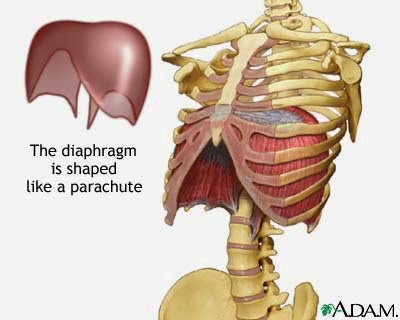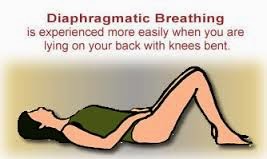A few weeks ago, I had the chance to talk with a group of athletes at Edge Athlete Lounge about Diaphragmatic Breathing. You might be wondering how this even came about?? Well, I met with one of the owners, Robyn LaLonde, to discuss a topic for me to come by and do an educational talk about. She said her members were interested in learning about diaphragmatic breathing and how it could make them better athletes…
Mind. Blown.
As a yogi turned endurance athlete, I’m well aware of the MANY benefits of true, deep belly breathing…not only for the general population, but especially athletes looking to their enhance their performance in ANY sport. Then to find a group of athletes actually interested in learning about this, I was pumped. This is NOT your average group of endurance athletes…loving on it.
Since everyone couldn’t be there, here’s a recap 🙂
In my opinion, diaphragmatic breathing is one of the little tweaks that athletes can make in their training and racing that will produce BIG gains in their sport. Don’t get me wrong, this isn’t an easy concept for most and requires practice. Once you get it down, it becomes second nature and you’ll do it out of habit. Even when you’re suffering through a tough interval, or at the end of a race. Trust me on this…I’ve been doing it for years.
You might ask…what is a diaphragm? I’m going to make it real simple, it basically separates your chest and abdomen, and it plays a major role in breathing.


You really want to focus on breathing with your abdomen, not just your chest. As you inhale, you will start breathing into your abdomen. Your belly will expand in ALL directions (not just forward). Then allow the air to continue filling through your upper body and chest in all directions (slowly and naturally)…front, sides, and back. Once you’ve completed a full inhale, start your exhale in the same direction. Your belly will begin to contract back towards your spine, then slowly allow the air to naturally exit your body. Your chest will relax back into it’s normal state.
There are 2 exercises I really enjoy practicing this technique with…
1. Laying down.

The absolute EASIEST way to feel yourself using proper diaphragmatic breathing is to lay down. Close your eyes, and place your hands on your abdomen. Begin your inhale, and feel your belly expand into your hands. I recommend having one hand to your side as well as the front of your body to make sure you are breathing in all directions. Then as your inhale moves through your upper body towards your chest and neck, allow your hands to follow your breath, walking them up towards your chest and neck. Your chest should be expanding just like your belly on the inhale. Once you begin your exhale, bring your hands back down to your belly to feel your belly contract back towards your spine. Again, as you continue to exhale and your breath begins to leave your body, slowly move your hands back up to your chest and neck.
2. Sitting up.

Repeat the same exercise sitting up as you did laying down. It’s not as easy to feel sitting up, so move on to this once you’ve felt diaphragmatic breathing laying down.
A couple tips on diaphragmatic breathing…
On your inhale, imagine yourself filling a tire with your belly. Expand in ALL directions.
You don’t want to force your breath, it should be natural. Feel like the air is suspended, not held.
Try to breathe through your nose instead of your mouth.
This is all great…but how will this impact your athletic performance?
Running, training, and exerting hard efforts can cause muscle groups involved with your breathing to tighten. This will reduce air intake which results in less oxygen availability for working muscles which means the heart has to pump more of your subpar-oxygenated blood at a faster rate in order for you to maintain your “relaxed pace”. Long story short, this can cause your 70-75% effort feel like 95%. Therefore, if you can master diaphragmatic breathing and incorporate it into your training and racing, you will be able to sustain faster and harder efforts for longer periods of time. It can also help you get through those tough, painful, and dark moments in training and racing.
Soooo…if you can manage your breath, there is NO DOUBT you will see significant performance gains.
Here are a few of my favorite ways to incorporate diaphragmatic breathing into my training and racing…
- When you’re running – inhale with 4 strides, exhale with 4 strides. Do this at your own pace, it can be on 2 stride intervals, or whatever works best for your body. I highly recommend trying this on your zone 1-2 runs.
- During your activity of choice – feel your breath through your belly with your hands every 5 minutes. Make sure your are breathing into your belly and your belly is expanding out on the inhale/contracting back towards your spine on the exhale.
- Shake out your arms every 5 minutes, and relax your jaw. This will encourage more relaxed, deep breathing.







